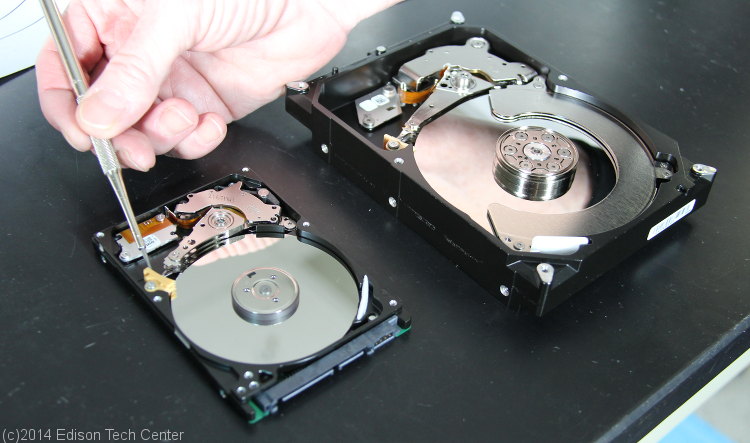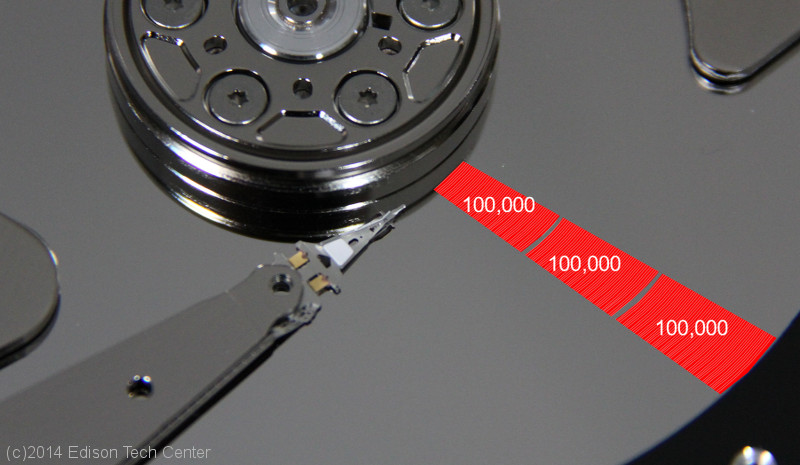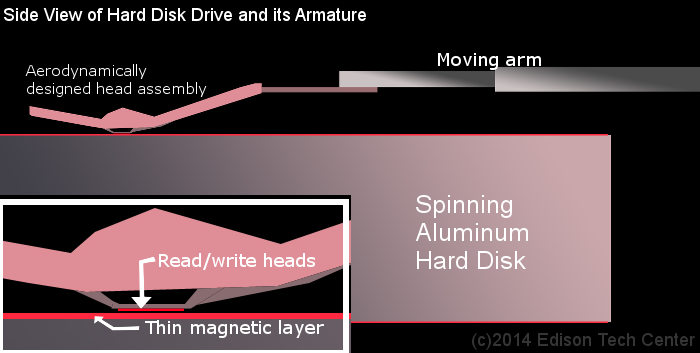Hard Disk Drives

Hard disk drives are magnetic recording devices which store information for computers. HDD's (as they are known) evolved from floppy disks and magnetic recording tapes in historic computers.

|
HDDs use a thin film of specially designed magnetic material (iron-cobalt typically) on a substrate of aluminum. Read and write heads (electromagnets) are mounted on the end of an arm which can move to read tracks on the spinning disk. The read and write heads are microscopic and the tracks on the disk are extremely small in order to squeeze in as much memory as possible in a small space. |


The heads 'fly' over the magnetic medium at great speeds. The flying heads are on a block which has grooves designed by aeronautics engineers. The grooves capture the airflow and are designed to fly the head off the medium surface as close as possible. A tiny buffer of air protects the medium from scratching and protects the fragile heads
Below: 10 heads in a head stack assembly. These read the top and bottom sides of 5 stacked hard disks. Disks are stacked in order to jam more memory into a smaller space.

Related Topics:
![]()
Semiconductor Electronics
![]()
Magnetic Recording
![]()
Lasers
![]()
Vacuum Tubes
![]()
Capacitors
![]()
More Stuff
Sources:
How Hard Drives Work. Edison Tech Center. 2014
Seagate Technology
Photos/Video:
Edison Tech Center

